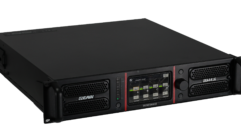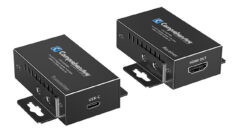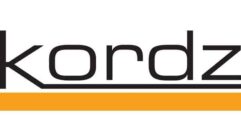DSP Facilitates Wide Range of Applications on Campus
Nov 7, 2007 12:00 PM,
By Linda Seid Frembes
According to The AV Industry Market Definition and Strategy Study, conducted on behalf of InfoComm International by Acclaro Growth Partners, the education market is one of the three largest consumers of AV products and services. As the education technology market continues to grow and evolve, forward-thinking technology adopters are designing and installing audio processing systems that can handle diverse applications.
“I usually see products used in e-learning centers, mock classrooms, training centers or mock courtrooms,” says Gordon Moore CTS, vice president of sales for Lectrosonics, who often serves as a resource for AV consultants and design/build firms. “Distance learning is the primary application. The biggest challenge facing the market right now is rooms that are not designed for distance education.”
Rooms not designed for distance learning often have low ceilings, poor acoustics, and moveable furniture. “Whereas rooms designed for that purpose have soft surfaces for improved acoustics, better lighting and fixed furniture so the camera shot doesn’t change. By keeping the students in the same place each time, the person on the other end can better see and hear the students’ questions,” Moore says. “Digital signal processing [DSP] can assist with the development of an existing room by using a mix minus system or adding audio conferencing with echo return loss.”
With the cost of construction for a new classroom (or a new building), it makes sense that schools will invest in DSP which simplifies how a school can optimize a purpose-built distance learning room. “In the higher education market, we are seeing more multipurpose spaces,” Moore says. “I anticipate more of this trend; it is better asset management to have space that today is a theater and tomorrow is a large classroom.”
The University of Illinois at Urbana-Champaign is a good example of how schools are addressing the growing needs of its students and teachers. The university offers more than 150 undergraduate and more than 100 graduate and professional programs. With its many academic programs ranked among the best in the world, the university’s emphasis on campus-wide academic excellence has built its reputation as one of the nation’s premier public universities. To help facilitate the multitude of lectures, meetings, conferences, and other campus events, the university recently opened a new alumni center with signal routing and processing capabilities by Lectrosonics.
The Alice Campbell Alumni Center, opened in Spring 2006, measures 54,000 square feet, and it includes a reception gallery, library, conference rooms, lounges, administrative offices, and a patio for outdoor activities. “The main ballroom is a large multipurpose area that is used for everything from social gatherings to lectures and conferences,” says Matt Sherer, lead installation technician for CITES Classroom Technologies, a group of IT, audiovisual, and related specialists charged with designing, installing, and maintaining the university’s technology infrastructure. “During the design and construction of this building, it became apparent we needed the capability to route a variety of inputs to multiple destinations. Of equal importance, we wanted the ability to program several configurations so that they could be easily recalled—depending upon how the room was to be set up.”
To address these issues, Sherer installed a Lectrosonics DM1612 Digital Automatic Matrix Mixer. “This room can be used as a single, large space or it can be divided into two smaller areas,” Sherer says. “In addition to general sound reinforcement, we also have the mixer programmed to provide feeds to multiple press boxes as well as the Alumni Center’s lounge. The mixer can accommodate one large setup or two smaller room setups simultaneously and everything is written into system memory and is recalled via the house control system.”
Moore has not seen the K-12 market embrace DSP technology just yet, though. “There are so many legislative rules like ‘No Child Left Behind’ that negates the benefit of distance learning. They are trying for more one-to-one contact,” Moore says. “The other hurdle in K-12 is the lack of funding to implement new AV technology. There have been so many rollbacks in art and music, that there are other priorities for spending.”
However, more and more educational facilities will depend on DSP systems that have relatively simple signal flow but offer the utmost in usage flexibility. “DSP really does help maximize the return on investment of a building,” Moore says.










